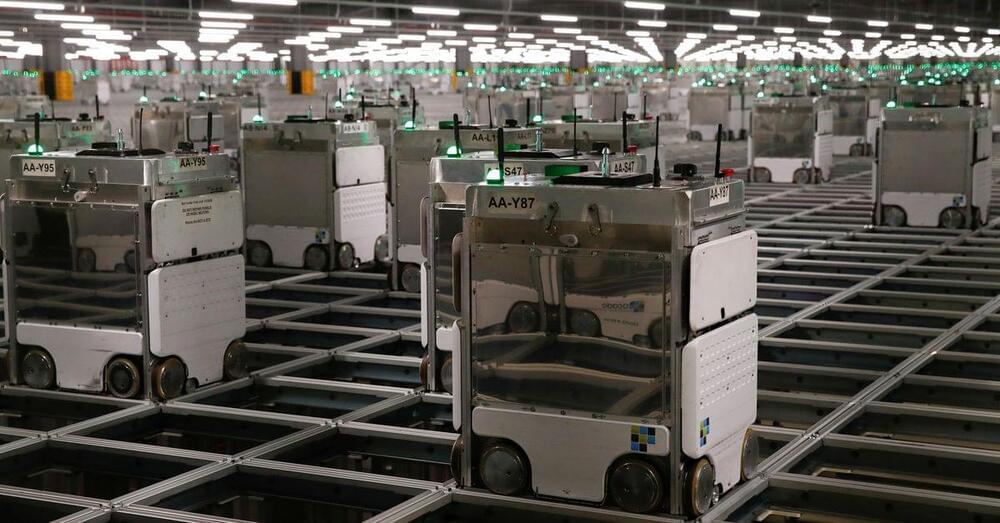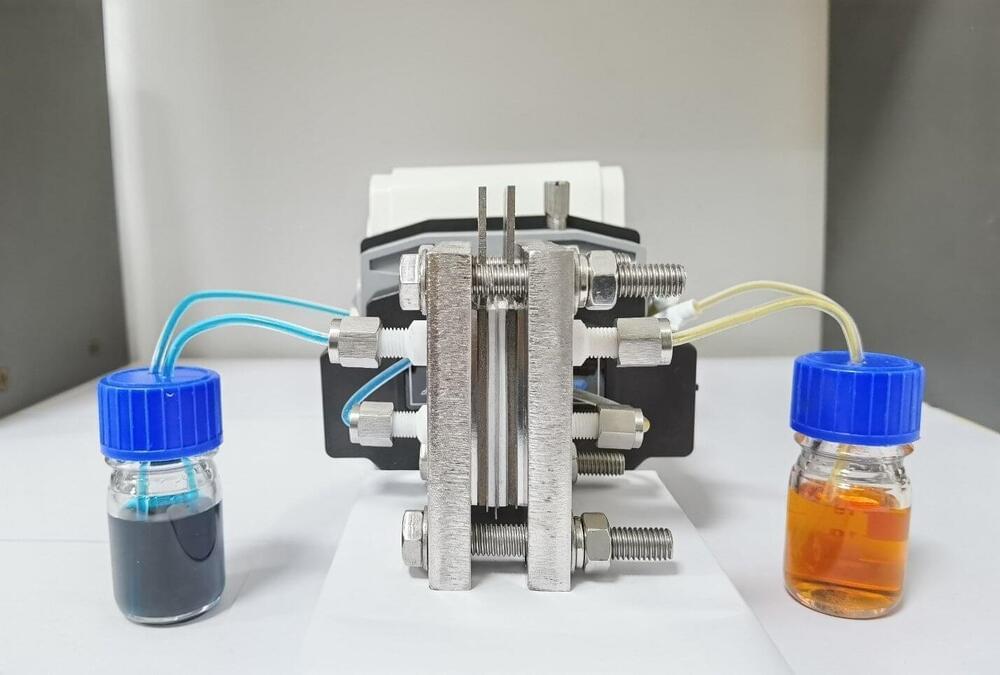Scientists surveyed dozens of species’ genomes to uncover keys to longevity.



Nov 11 (Reuters) — Companies in North America added a record number of robots in the first nine months of this year as they rushed to speed up assembly lines and struggled to add human workers.
Factories and other industrial users ordered 29,000 robots, 37% more than during the same period last year, valued at $1.48 billion, according to data compiled by the industry group the Association for Advancing Automation. That surpassed the previous peak set in the same time period in 2017, before the global pandemic upended economies.
The rush to add robots is part of a larger upswing in investment as companies seek to keep up with strong demand, which in some cases has contributed to shortages of key goods. At the same time, many firms have struggled to lure back workers displaced by the pandemic and view robots as an alternative to adding human muscle on their assembly lines.

To produce a cost-effective redox flow battery, researchers based at the South China University of Technology have synthesized a molecular compound that serves as a low-cost electrolyte, enabling a stable flow battery that retains 99.98% capacity per cycle. They published their approach on August 14 in the Energy Material Advances.
Comprising two tanks of opposing liquid electrolytes, the battery pumps the positive and negative liquids along a membrane separator sandwiched between electrodes, facilitating ion exchanges to produce energy. Significant work has been dedicated to developing the negative electrolyte liquid, while the positive electrolyte liquid has received less attention, according to corresponding author Zhenxing Liang, professor in the Key Laboratory of Fuel Cell Technology of Guangdong Province, School of Chemistry and Chemical Engineering, South China University of Technology.
“Aqueous redox flow batteries can realize the stable electrical output for using unsteady solar and wind energy, and they have been recognized as a promising large-scale energy storage technology,” Liang said. “Electroactive organic merit of element abundance, low cost and flexible molecular control over the electrochemical features for both positive and negative electrolytes are regarded as key to developing next-generation redox flow batteries.”
Tesla rival Rivian stock price was valued at over $100 billion after it was publicized at the world’s largest IPO in 2021.
The Rivian stock price was valued at over $100 billion after it was publicized at the world’s largest IPO in 2021. With this, Tesla CEO Elon Musk has given some warning that Rivian may face.
Rivian Stock Price Prediction: Elon Musk Gives Heads-Up to the Challenges
According to Economic Times, Rivian’s stock price has soared as much as 53 percent during its Nasdaq debut on Wednesday, which provided the Amazon-backed electric vehicle manufacturer a market price of more than $100 billion after what could be said as the world’s largest IPO this year.
A team of researchers led by an Institute for Quantum Computing (IQC) faculty member performed the first-ever simulation of baryons—fundamental quantum particles—on a quantum computer.
With their results, the team has taken a step towards more complex quantum simulations that will allow scientists to study neutron stars, learn more about the earliest moments of the universe, and realize the revolutionary potential of quantum computers.
“This is an important step forward—it is the first simulation of baryons on a quantum computer ever,” Christine Muschik, an IQC faculty member, said. “Instead of smashing particles in an accelerator, a quantum computer may one day allow us to simulate these interactions that we use to study the origins of the universe and so much more.”

The revolution will be electrified.
For decades, gas-engine power equipment was the only choice for yardwork, followed by corded power tools at a distant second. Anything powered by a battery was either ineffective or an expensive novelty. The few successful versions of battery-powered outdoor equipment were limited to low-power applications, like grass shears. Of course, for every rule there’s an exception: We reported on the highly effective GE Elec-Trak battery-powered tractor and Black & Decker’s somewhat effective battery mowers in our April 1970 issue.
In many respects, gas-engine equipment still rules the outdoors in terms of power and cost effectiveness–at least for people with serious work to do. But a revolution in outdoor power is occurring. For many people doing yardwork, cordless power tools are now the default choice. This has stood the status quo on its head.
🛠 Want to fine-tune your yard care and maintenance? Come learn how with us.

Forget all the nanotechnology devoted to fighting cancer, and just consider that nanoparticles have invaded makeup, anti-odor socks, sunscreen, plastic beer bottles and home pregnancy tests. Now scientists have developed a way to assess the health and environmental impact of such nanoparticles: a tiny microresonator that can detect and measure individual particles smaller than a single virus.
The microresonator is a lab-on-a-chip that harnesses the “whispering gallery” concept that’s displayed by buildings such as St. Paul’s Cathedral in London. The cathedral’s domed gallery can carry whispers easily across to the other side, but normal-volume voices end up garbled after bouncing around the dome multiple times.
Similarly, microresonators can bounce laser light many times around a circular “waveguide,” such as a glass ring. A laser frequency must perfectly fit the circumference of a ring to achieve this whispering-gallery mode.
Play Conflict of Nations for FREE on PC or Mobile: 💥 https://con.onelink.me/kZW6/VisualPolitik.
Receive an Amazing New Player Pack, only available for the next 30 days! Thanks to Conflict of Nations for sponsoring this video!
Asia-Pacific has become the most important region in the world. A region in which the United States and China are fighting a battle for political and military dominance. As we told you in a past video, the distance separating these two powers is still worlds apart, yet China is committed to becoming a regional mega-power.
To achieve this, the People’s Liberation Army is developing a whole new series of weapons with which they aspire to gain control of Asia Pacific. In this video we give you some clues about the weapons programs with which China wants to pursue its goal.
Recommended video: Why won’t China Surpass the United States? https://youtu.be/ZqowS-hlZ3M
Join the VisualPolitik community and support us on Patreon: https://www.patreon.com/VisualPolitik

Green energy company Fortescue Future Industries (FFI) is collaborating with MMA Offshore to convert a 75-meter (246-feet) vessel, the “MMA Leveque”, so that it can run almost entirely on green ammonia by 2022, a press statement from FFI explains.
In the same statement, the company reveals that its chairman, billionaire Andrew Forrest, called for an industry-wide push for shipping to reach net-zero by 2040 during a keynote for ‘Transport Day’ at the COP26 conference in Glasgow this week, a United Nations summit aimed at accelerating action on climate change.
The MMA Leveque is one of several Fortescue Metal Group’s vessels and vehicles that will be transformed to operate on green fuels, as the company also says it is gradually working on converting its fleet of trucks, locomotives, and ships. Earlier this year, FFI successfully demonstrated the combustion of a blended ammonia fuel in a locomotive, and it says it will soon be able to power trains on one hundred percent green ammonia.